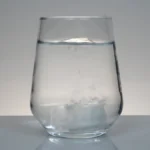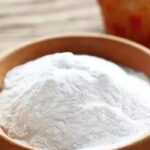You might notice fumaric acid food additive on snack or drink labels. People add this fumaric acid food additive because it makes food taste sour and also helps keep food fresh for longer. The U.S. FDA says fumaric acid food additive is safe to eat, and the European Food Safety Authority agrees it is safe in normal amounts. In 2024, the world market for fumaric acid food additive reached $130 million. While some people worry about artificial additives in food, most experts think fumaric acid food additive is not risky.
Key Takeaways
- Fumaric acid gives foods and drinks a strong sour taste. It makes them taste better with less used.
- It helps food stay fresh longer. It stops bad bacteria and keeps food from going bad. This is helpful in baked goods and snacks.
- Fumaric acid controls how sour food is. It keeps food color and taste the same. It works better than some other acids in many recipes.
- Most experts say fumaric acid is safe to eat in normal amounts. Some people may get mild stomach problems or rare allergies.
- Fumaric acid is usually made from chemicals that come from oil. Some people may want to think about this when picking foods with this additive.
Fumaric Acid Food Additive
What Is Fumaric Acid?
Have you ever tasted something sour in snacks or drinks? Fumaric acid is what gives many foods a tangy taste. This compound is called trans-butenedioic acid. Its molecular formula is C4H4O4. Fumaric acid is found in nature. It is in plants like Fumaria officinalis, lichen, Iceland moss, and mushrooms such as Boletus scaber. Animal tissues have fumaric acid too. You can find it in fresh beef and skin that gets sunlight. Some fungi make fumaric acid when they use glucose. Fumaric acid looks like a white or colorless powder. It does not have a smell. It tastes tart and sour. Your body uses fumaric acid in the citric acid cycle. This cycle helps your body get energy from food.
Here are some facts about fumaric acid:
- It is the trans isomer of butenedioic acid. Maleic acid is the cis isomer.
- Fumaric acid is more stable than maleic acid.
- The compound has a reactive double bond.
- It is used in food and industrial applications.
How It’s Used
You might see fumaric acid food additive as E297 on food labels. The U.S. FDA and European Food Safety Authority say it is safe. Fumaric acid is in many foods. It helps control acidity and keeps food fresh. Fumaric acid food additive works as an acidulant and acidity regulator. It is used in drinks and baking powders. Wheat tortillas often have fumaric acid. It acts as a preservative and helps dough rise. You can taste it in “Salt and Vinegar” chips. It makes them sour. Fumaric acid can take the place of tartaric and citric acids in recipes.
Here is a table showing common uses of fumaric acid in food:
| Food Product | Use of Fumaric Acid Food Additive |
|---|---|
| Dairy products | Enhances flavor and stabilizes chocolate milk, eggnog |
| Gelatin desserts | Improves aftertaste and texture |
| Processed meats | Adds flavor and stability to bacon, sausage, canned meats |
| Processed fruits/vegetables | Used in dried, canned, frozen, and cooked varieties |
| Alcoholic beverages | Found in beer, wine, spirits, wine coolers |
| Condiments | Used in mustard, vinegar, sauces |
You also find fumaric acid in baked goods, candies, cereals, and processed cheese. This food additive helps food stay fresh and taste good.
Benefits of Using Fumaric Acid

Flavor Enhancement with Fumaric Acid
When you eat foods with fumaric acid, you taste a strong sour flavor. This sourness lasts longer than other acids. Fumaric acid is used in snacks, candies, and drinks to make them taste better. It gives a stronger sour taste than citric or malic acids. You do not need much to get the same effect. In fruit drinks, it helps make the taste feel more like real fruit. The sourness is not too sharp. Fumaric acid dissolves slowly in your mouth, so the sour taste stays longer, especially in gum. Because it does not mix with water easily, the sour flavor lasts. Fumaric acid keeps the pH steady, so the color and taste of fruit juice drinks stay good.
- Fumaric acid keeps pH around 3.0 and is a strong buffer.
- It gives a long-lasting sourness, so it is used in candies and gum.
- Mixing fumaric acid with other acidulants makes fruit flavors taste more real.
Fumaric Acid for Food Preservation
Fumaric acid helps keep food fresh for longer. It stops bacteria like Listeria from growing by making it hard for them to survive. Fumaric acid can also break down sticky layers that protect bacteria. This helps keep your food safe and fresh. Its power to stop germs is stronger than just its sourness. Fumaric acid also helps food last longer by stopping moisture and spoilage. You find it in baked goods, tortillas, and dry mixes. It keeps these foods soft and stops them from getting sticky or clumpy.
- Fumaric acid does not soak up water, so dry foods stay loose and stable.
- It keeps food safe by stopping germs and keeping quality high.
- Foods with fumaric acid spoil less and last longer.
Fumaric Acid and pH Control
Fumaric acid helps control pH in food. This is important for taste and safety. It lowers pH better than citric acid, especially in foods with pH above 4.5. Fumaric acid keeps the pH steady, which helps keep color and flavor in fruit juice drinks. You need less fumaric acid to get the same sourness and pH drop as other acids. This makes it a smart choice for foods that need steady acidity.
| Aspect | Fumaric Acid | Citric Acid (Comparison) |
|---|---|---|
| pH Control | Lowers pH well with little extra sourness, works best above pH 4.5 | Not as good at buffering near pH 3.0 |
| Buffering Capacity | Strong buffer near pH 3.0, keeps pH steady in fruit drinks | Weaker buffer near pH 3.0 |
| Sourness | Gives a long-lasting sour taste with less needed | Needs more acid for same sourness |
| Cost Efficiency | Strong acid, 2 lbs can replace 3 lbs citric acid in jams and jellies without changing pH or gel | Needs more acid for same effect, costs more |
| Physical Properties | Does not soak up water, keeps dry mixes stable and flavor good | Soaks up water, can make mixes wet and flavor worse |
| Application Benefits | Keeps color and flavor in fruit juice drinks by holding pH steady | Not as good at keeping color and flavor |
Fumaric acid gives better stability and works well in many foods.
Cost-Effectiveness of Fumaric Acid
Food makers use fumaric acid because it saves money. You need less to get the same sourness and pH control as other acids. This means you spend less on ingredients. Fumaric acid works in many foods, like candies and baked goods. The market for fumaric acid is growing because it helps food last longer and taste fresh. Other acids, like tartaric or gluconic acid, cost more and are not as useful. Fumaric acid is cheap and works well, so it is popular in processed foods.
- Fumaric acid’s strong sourness means you use less.
- It does not soak up water, so dry mixes stay good and you waste less.
- Fumaric acid is simple and easy to recognize, so food makers like it.
Tip: If you want food that tastes good and stays fresh, look for fumaric acid on the label. It helps your food last longer and stay safe, not just taste better.
Fumaric Acid Cons
Digestive Irritation
Some people can get stomach problems from eating foods with fumaric acid. Most people feel fine, but a few might feel sick. You could have:
- Nausea
- Diarrhea
- Constipation
- Stomach pain
These problems usually stop if you avoid foods with this additive or change what you eat. Fumaric acid esters, which are similar, can also upset your stomach. Most of the time, these problems are not serious. But you should notice if you feel bad after eating foods with fumaric acid.
If your stomach is sensitive, watch for these problems. Talk to a doctor if you keep feeling sick.
Allergic Reactions
It is rare, but some people can be allergic to fumaric acid. You might get a rash, itchy skin, or swelling. Some people may have trouble breathing. These serious problems do not happen often, but you should know about them. If you see any allergy signs after eating foods with fumaric acid, stop eating them and get help from a doctor right away.
Overconsumption
Eating too much fumaric acid can cause health problems. The US FDA and European Food Safety Authority have set safe limits. You can see these limits in the table below:
| Regulatory Agency | Status of Fumaric Acid in Food Products | Acceptable Daily Intake (ADI) |
|---|---|---|
| US FDA | Generally Recognized as Safe (GRAS) | 0-10 mg/kg body weight/day |
| EFSA | Approved with no specific limitations | 10 mg/kg body weight/day |
If you eat more than the safe amount, you might get more stomach problems. Large amounts can cause nausea, diarrhea, or stomach pain. There is no proof that normal food levels are very harmful, but you should not eat too much. Most foods do not have enough fumaric acid to hurt you, but it is smart to check labels and eat many different foods.
Synthetic Origin
Most fumaric acid in food is not from plants. Factories make it using chemicals from oil and gas. They use hydrocarbons like benzene or n-butane. These chemicals turn into maleic anhydride, then maleic acid, and finally fumaric acid. This way makes a lot of fumaric acid, but it uses oil, which cannot be replaced. Some people worry about using oil-based chemicals in food. There are also worries about pollution from these factories. Scientists are trying to make fumaric acid from natural things, like fungi, but this is harder and costs more. Even though it is made in a factory, the fumaric acid in food must be very pure—at least 99.5% pure. Food safety groups say it is safe, but you might want to know where your food additives come from.
Dissolving Issues
Fumaric acid does not mix with water as well as other acids like citric acid. This can make it hard to spread evenly in some foods. In dry mixes or baked goods, you might see clumps or taste uneven sourness. Because it dissolves slowly, it can be hard to control the pH in foods. Sometimes, this is good because the sour taste lasts longer. Other times, it can make the food taste or feel strange. Food makers need to plan recipes carefully to fix these problems.
| Challenge | Description | Implication for Food Products |
|---|---|---|
| Low aqueous solubility | Fumaric acid does not mix well with water | Can cause uneven flavor or texture in foods |
| High acidic strength | Strong acid, but hard to control release | May lead to sudden sourness or stability problems |
| Slow diffusion | Does not spread quickly in food matrices | Keeps pH steady, but can make mixing difficult |
| Matrix design dependency | Needs special recipes to work well | Food makers must adjust formulas for best results |
Note: If you see fumaric acid on a label, remember it can change how your food tastes and feels, especially in dry or baked foods.
Fumaric Acid Esters and Other Uses
Food Applications of Fumaric Acid Esters in Processed Products
Fumaric acid esters are found in lots of foods. These compounds help food stay safe and fresh. They can take the place of nitrites in meats. This stops bad bacteria from growing. When you eat foods with fumaric acid esters, they last longer and are safer. You see these esters in sausages, deli meats, and other processed foods. They make it tough for germs to live. Fumaric acid esters also keep food looking and tasting good. Your snacks might stay fresh longer because of these additives.
Fumaric acid esters are used for more than just food. Doctors use them to treat psoriasis. Psoriasis is a skin problem that causes red, scaly spots. If your psoriasis is bad, your doctor may give you fumaric acid esters. These medicines help control symptoms. Fumaric acid esters are part of special treatments for this disease. Many people with psoriasis use these when other medicines do not help. These treatments can lower flare-ups and help skin get better. Some people worry about side effects, but doctors watch patients closely.
Use of Fumaric Acid in Animal Feed and Its Benefits
Fumaric acid is also used in animal feed. Farmers add it to help animals grow strong and healthy. Fumaric acid lowers gut pH, which helps good bacteria grow. It keeps bad bacteria away. Animals get more nutrients from their food. Here is a table showing how feed grade fumaric acid helps different animals:
| Livestock Segment | Uses in Feed | Observed Benefits |
|---|---|---|
| Poultry | Improves gut health, helps absorb nutrients, stops harmful bacteria | Better food safety, improved nutrient uptake |
| Swine | Boosts feed efficiency, supports gut health, helps piglets grow | Faster growth, healthier gut |
| Ruminants | Helps digestion, increases feed intake, supports health | Better feed use, improved health |
| Aquaculture | Improves water quality, helps feed work better, supports growth | Healthier and faster-growing fish |
Fumaric acid esters and fumaric acid help animals digest protein, minerals, and fats. They balance the gut and lower the need for antibiotics. Farmers like using them because animals stay healthy and grow better. Fumaric acid is also used outside of food. Doctors use fumaric acid esters to treat psoriasis, especially for severe cases. These esters help control symptoms and make life better for people with psoriasis.
Note: Fumaric acid esters have many uses. You find them in food, animal feed, and medicine. They help treat psoriasis and keep food and animals healthy.
Fumaric acid helps your food taste better and last longer. Most experts say you can eat it safely in normal amounts. Here are some important facts:
- Fumaric acid is safe for you and the environment when used as allowed.
- It can irritate your skin, eyes, or lungs if you touch or breathe in the powder.
- Safety for fish and other water animals is still not clear.
You can check food labels and choose what feels right for you. 😊
FAQ
What does fumaric acid taste like?
You will notice a strong, tangy sourness when you eat foods with fumaric acid. The sour flavor lasts longer than other acids. Many people enjoy this taste in candies, chips, and drinks.
Is fumaric acid safe for children?
You can safely eat foods with fumaric acid if you follow normal serving sizes. Food safety groups say it is safe for all ages. If your child has a sensitive stomach, watch for any signs of irritation.
Why do food makers use fumaric acid instead of citric acid?
Food makers choose fumaric acid because it gives a stronger sour taste with less product. It also helps food last longer and keeps dry mixes from clumping. This makes it a cost-effective choice for many processed foods.
Can you avoid fumaric acid in your diet?
You can avoid fumaric acid by reading ingredient labels. Look for E297 or the name “fumaric acid.” Choose fresh or less processed foods if you want to limit additives in your meals.




